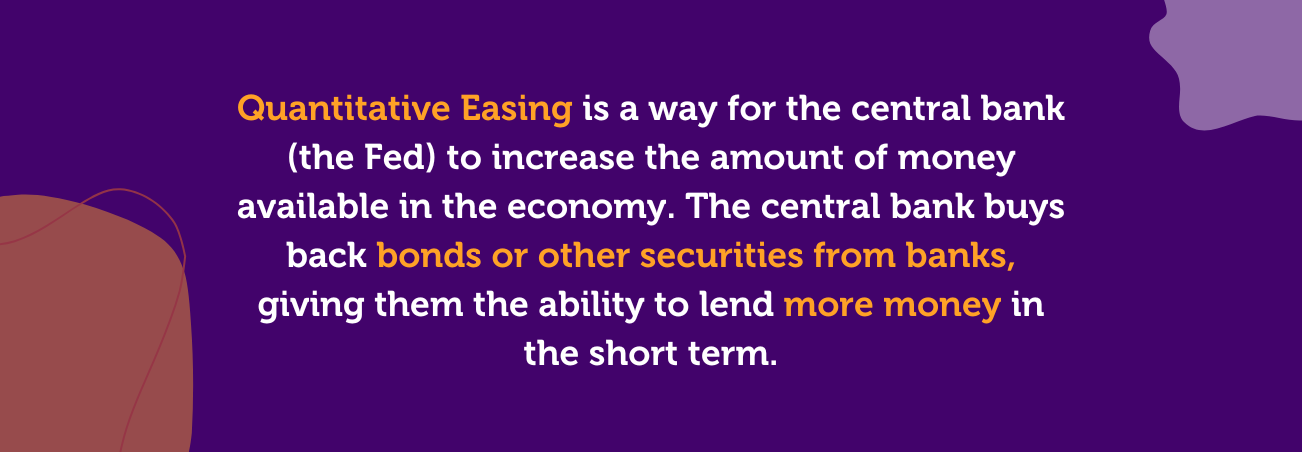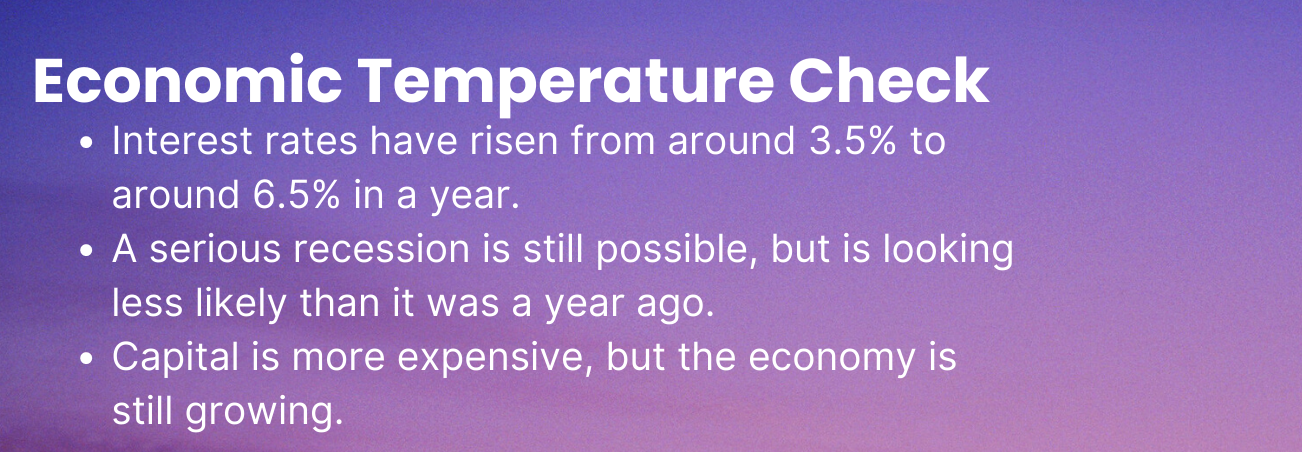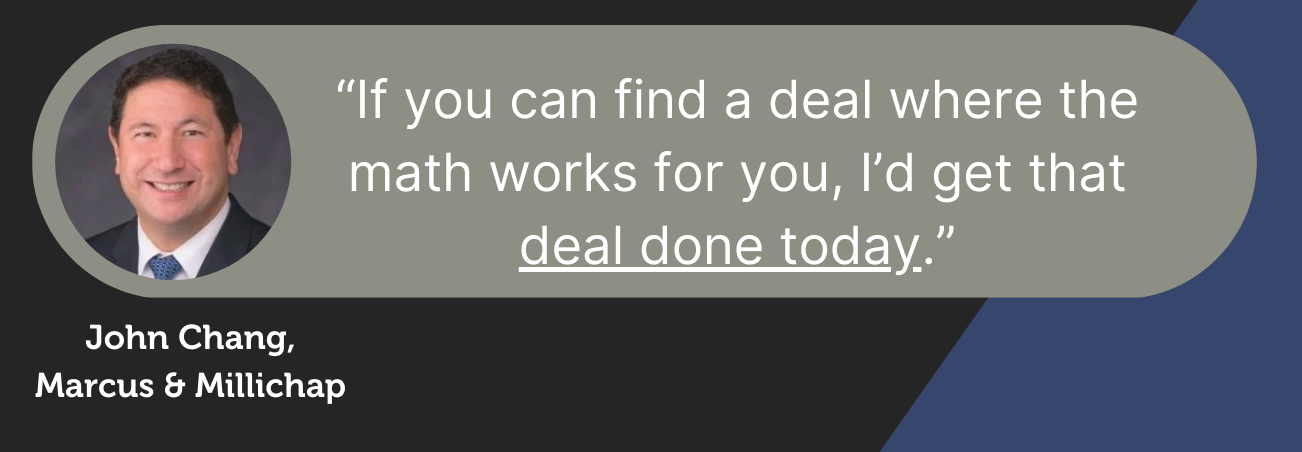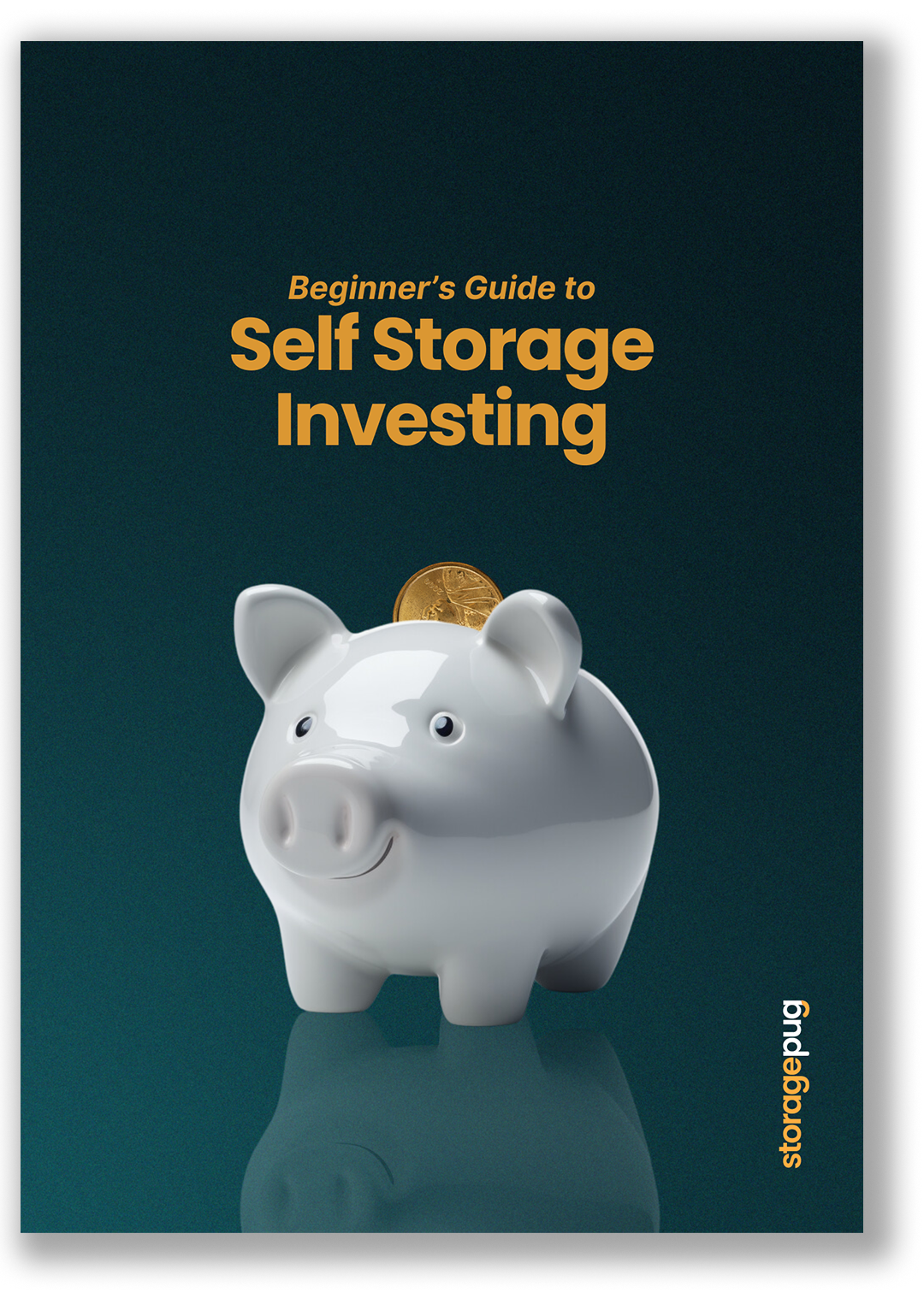Menu
February 28, 2023


The Fed is increasing interest rates by some number of Basis Points to tame inflation.
A recession is on the horizon - or is it? Maybe we’ll stick our soft landing instead.
Record low unemployment coupled with constant talk of recession, expensive capital but a growing economy… Investing in self storage in 2023 is certainly exciting. But should you invest in self storage now? Should you wait? And if you wait, what signs should you watch for?
Join us as we dive into the intricacies of self storage investing in 2023!
On our most recent GabFocus, we talked with John Chang from Marcus & Millichap about the state of the self storage industry. He, Tommy, and Melissa Huff from Affordable Storage Guys really dug into how self storage is doing as a whole, what to expect, and how investors should approach the current situation!
I recommend watching the video if you’ve got the time, as John’s insights could be invaluable. In this blog, we’ll be providing a digestible summary of the information.
Economic forecasts have been incredibly volatile over the last few years; investors have good reason to believe now is a great time to invest, and they’ve also got strong reasons to believe they should wait until conditions improve.
One year ago (as of February 2023), the Federal Reserve was still stimulating the economy through quantitative easing as part of its campaign to recover from the hit that the pandemic laid on the economy.

Then inflation got out of hand, and the Fed rapidly started increasing the interest rate.
Between March and November, the interest rate increased by 300 Basis Points (or, 3%).
That meant the previously cheap capital got much more expensive and scared a lot of investors out of the game. Some deals that looked great in March were looking much worse in December.
The cost of capital went from 3.5% to 6.5% in a year! So instead of needing to find a 4% return to make money, investors needed to find a facility that would make them more than 6.5% return just to keep up with the interest they owed on their investment.
In addition to money getting more expensive, the economic situation was frightening too. Fed Chairman Jerome Powell even announced that, in order to tame inflation, unemployment would have to increase, which could very well cause a full-blown recession.
But, since that announcement in August, the Fed has seen signs of improvement in inflation without the associated decline in employment.
The fabled soft landing from inflation seems like a real possibility now - that we might be able to tame inflation without causing a recession.
That’s great news for everyone, from self storage investors to anyone who buys groceries.
But this great news doesn’t mean we won’t suffer through the economic pain that’s been predicted since the Fed started increasing rates. We could well be waiting for the other shoe to drop, for the increased interest rates to dry up the flow of capital, halt investment, and strangle growth.
Of course, no one, not even John, knows what the future holds - but what’s the current situation look like? Should self storage investors build or should they panic?

One of the major points John made was that investors shouldn’t get caught up in today’s news!
While the news coming out today will certainly affect the industry, broad trends are going to make a far bigger difference than month-to-month changes in almost every case.
The average real estate investor will hold their property for between 5 and 7 years - some for much longer than that. This means that even if there’s a recession tomorrow, your self storage investment could still end up making you a lot of money when you sell it seven years from now!
Some of the long-term factors impacting the self storage market are: oversaturation, generational changes, and population migration.
If you’ll think back all the way to 2019… most of the world wasn’t worried about COVID-19, there were some fears of a recession coming but nothing urgent, and self storage was booming in popularity.
In fact, self storage was growing so fast that the chief fear in the industry was oversaturation - that too many investors had jumped on the storage bandwagon at the same time and supply was going to vastly outrace demand.
Remember when investors worried mostly about supply and demand instead of pandemics and wars? What an innocent time…
The total supply of self storage units in the country peaked in 2019. In 2020 it went down slightly because of the supply chain snarls, and the supply will increase slowly in 2023 and 2024.
So, if we were afraid of oversaturation in 2019, and the supply is still going up, should we be afraid of oversaturation now too?
Maybe a little bit - John gave an example of a street where three of the four corners of a crossroad had brand-new, multi-story self storage facilities. There are areas where the market has more self storage units than the demand will sustain.
But in general, across the country? Oversaturation just hasn’t been the problem experts thought it might be.
During the pandemic, when owners cut rates to keep their tenants, vacancies went to a record low of 6%. The economic upheaval drove increased demand for storage as people moved, downsized, and suddenly needed room in their homes for an office.
Since 2007 we’ve increased the supply of self storage units by almost 40%. In the same time frame, vacancy rates have gone from 15.5% to 7.5%.
This is a marked behavior change and is attributable to many factors. One of the main ones is that storage space is much cheaper than the equivalent space in a home.
Population growth, household formation, and Millennial demand for storage have also exceeded expectations, and demand is still high for self storage broadly, with evidence that it’s getting even higher.
The economy is growing at around 1-3% per year, and the population continues to grow as well. These two factors combined indicate that the demand for self storage is going to grow along with them.
One of the driving factors behind this increase in demand is the improved household formation rates among millennials.
Millennials are now a bigger generation than baby boomers, taking the mantle as the most important age group for self storage.
Ten years ago, when millennials were in their mid-twenties, this generation wasn’t looking for self storage. They didn’t have the wealth to buy houses and start families.
Now, millennials are in their thirties (which hurts to type) and are entering their prime earning years. This means buying houses, starting families, and earning the disposable income necessary to need a storage unit.
Millennials comprise 28% of the population but rent 39% of total storage usage
Millennials are using self storage at higher rates than other generations. They also visit their units more frequently and make use of the space in different ways.
While Baby Boomers were using self storage units to store Christmas trees or old furniture, millennials are using them to store mountain bikes for weekend excursions. Some millennials are using self storage as gigantic extra closets - storing clothes, shoes, or other items that they want ready access to.
These preferences mean that demand - while growing- is also shifting. Anyone wanting to use the self storage unit as a closet to store garments will probably want a climate-controlled unit. They may also be swayed by 24/7 access in a way prior generations were not, as a closet is no good if you can’t get to it.

Not only are millennials becoming to primary generation renting self storage, they’re also moving around the country.
The majority of new self storage construction is occurring in the southern states, partially because there’s room and permissive building laws, but mostly because that’s where the people are going.
According to Forbes and others, Americans are moving out of high-density northern areas and into southern states. Specifically, Texas, Florida, the Carolinas, Tennessee, Georgia, and other southern states have seen significant growth over the last decade, accelerating with the pandemic.
The advent of widespread work-from-home has allowed people to move to more rural areas where they can get a larger house, more land, and a lower cost of living. This, combined with the household growth of millennials, has led to a boom in storage facilities being built in southern states (like our 3 storage facilities on opposite corners example above).
Larger investment groups, including the REITs, are targeting high-value markets - higher-population centers and wealthier areas where they can make more money. Of course, the initial investment required to penetrate those markets is much higher, which is why the big players tend to dominate.
Independent operators tend to build in more rural areas because the start-up costs are smaller, but they can still turn a profit because the demand for storage is so high.
One of the best ways to determine whether an area is ripe for more storage is just to look at population trends - if you’re building a new property, it’ll take you a year to get on the market anyways, so even if the current market is a bit slow, a year from now it could be booming.
Remember, the average real estate investor holds their property for between 5 and 7 years. If you build in a growing area, your investment could be worth much more than you paid by the time you sell.
The current investment market is very fluid - we’re at a point where your prospects could go up, down, or stay the same, and it’s hard to guess which.
For self storage investors, the current sticking point is the cost of capital. As of our GabFocus with John, the interest rate sits at 6.5%, which feels like a huge number for many investors because a year or so ago the rate was near 3%.
Over the last ten years, capital has been relatively cheap, and it’s relatively expensive now - but that doesn’t necessarily mean it’s a bad time to invest. It simply means you need to be pickier about when you pull the trigger.
John pointed out that a lot of investors are waiting on the sideline because the rate is relatively high. This means you can find good deals without a bidding war.

John also gave us some metrics that self storage investors should keep an eye on!
First, as we mentioned earlier, population growth and migration.
Second, household formation among the younger generation is a great indicator of storage demand. As Millennials start families, buy houses, and get better-paying jobs, they’re going to need more storage.
People form households (buy houses and have babies) when they think they’ll be able to afford them. That translates into when they think the economy is doing well.
John recommends keeping an eye on the University of Michigan Consumer Sentiment Report.
If the general consumer thinks the economy is doing well, and they think their own prospects are good, they’re much more likely to take those steps outlined above.

The timelines of self storage investment mean you’re planning for what is going to happen in the next 1-7 years, rather than what’s going on right now.
While interest rates are high, that also lowers competition, so if you’ve got a good deal lined up, don’t let the headlines scare you out of it!
2023, 2024, and all the others looming ahead, promise to be good for self storage. We don’t expect the industry to boom as it has been, but it should continue to grow, especially in areas where the population is growing.
The younger generations (especially Millennials) are using more storage than their parents and grandparents, and the future of the industry is in their hands.
Interested in learning more about owning a self storage unit business? Check out some of these great resources!
